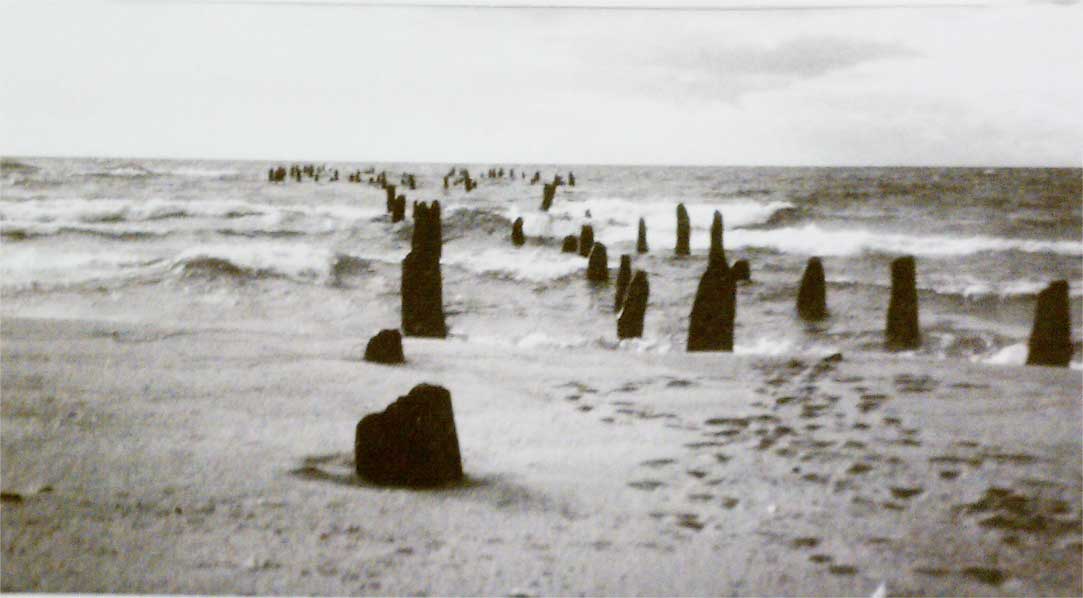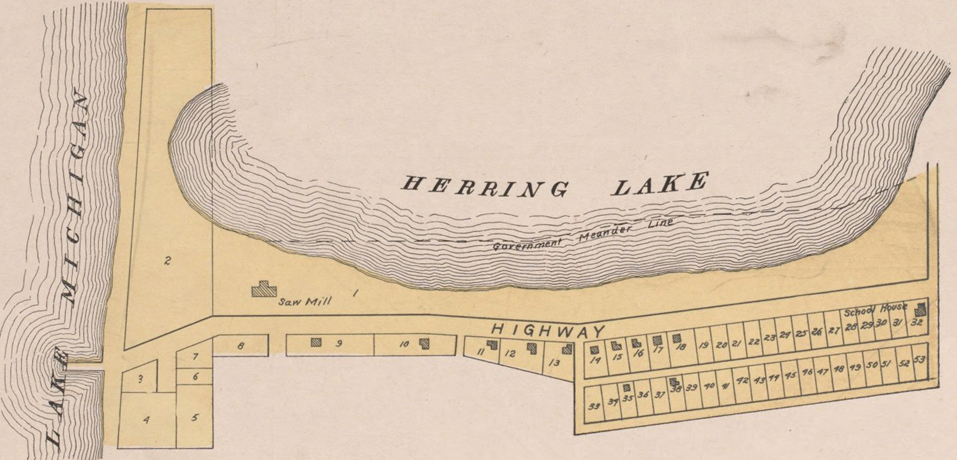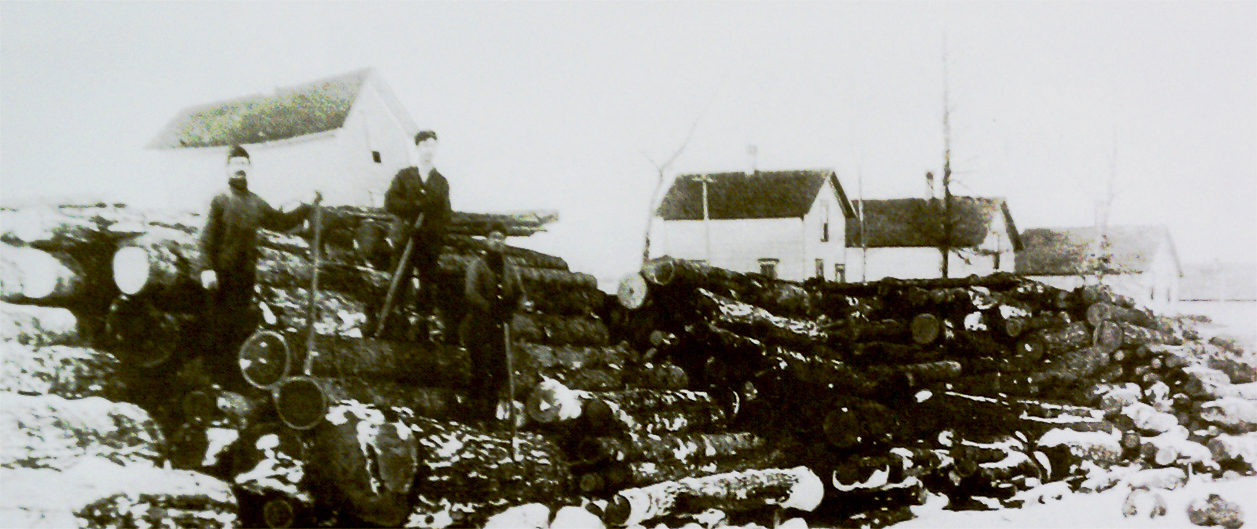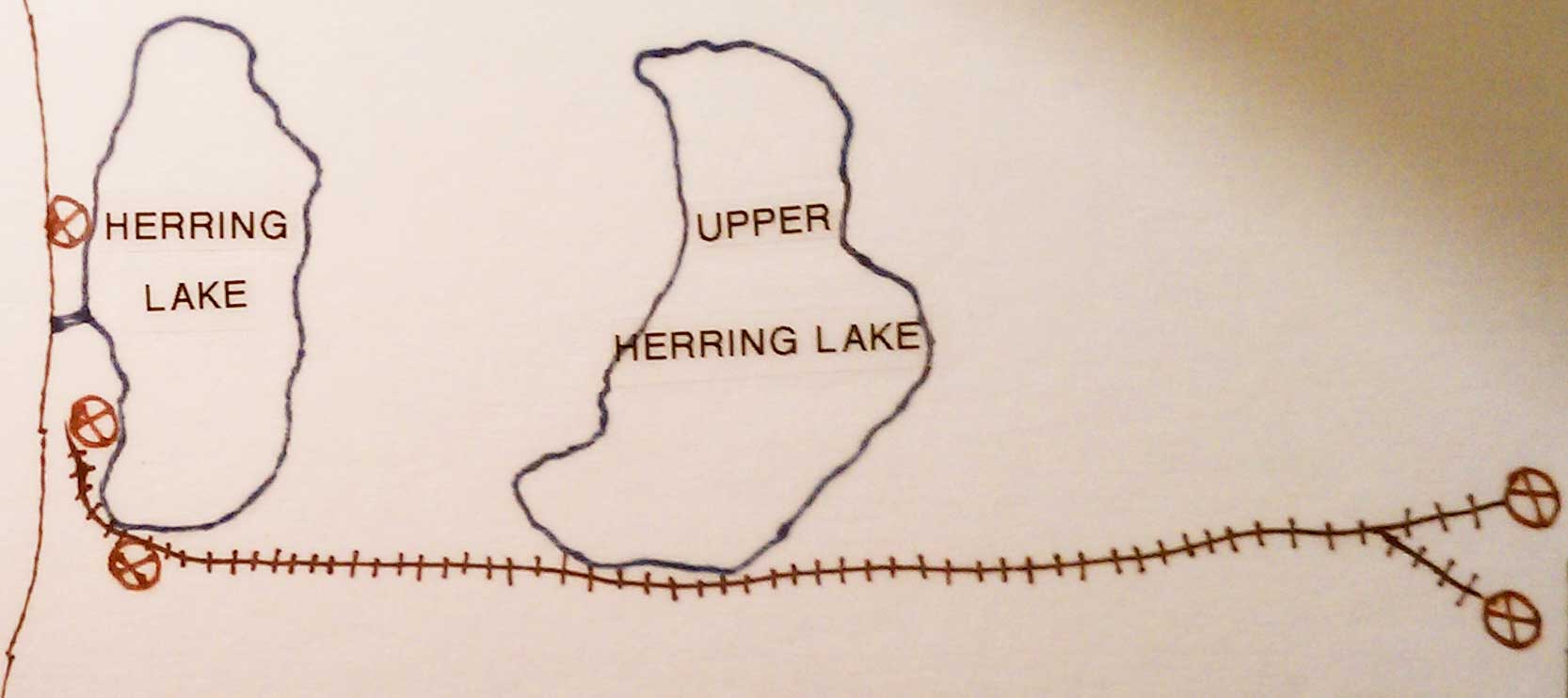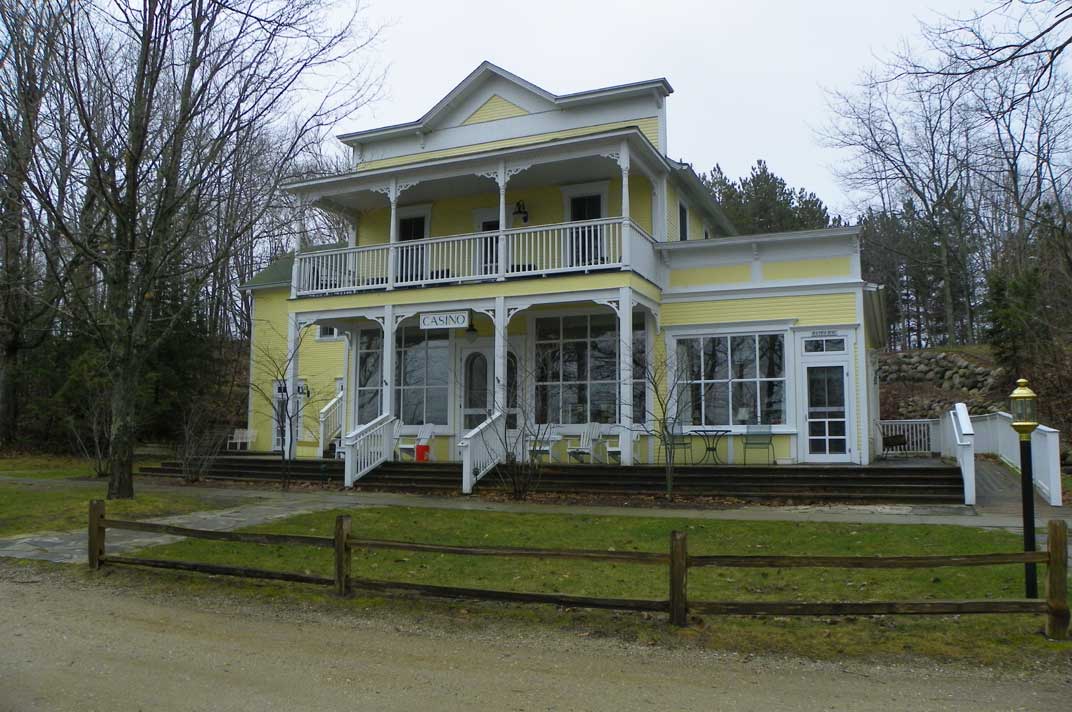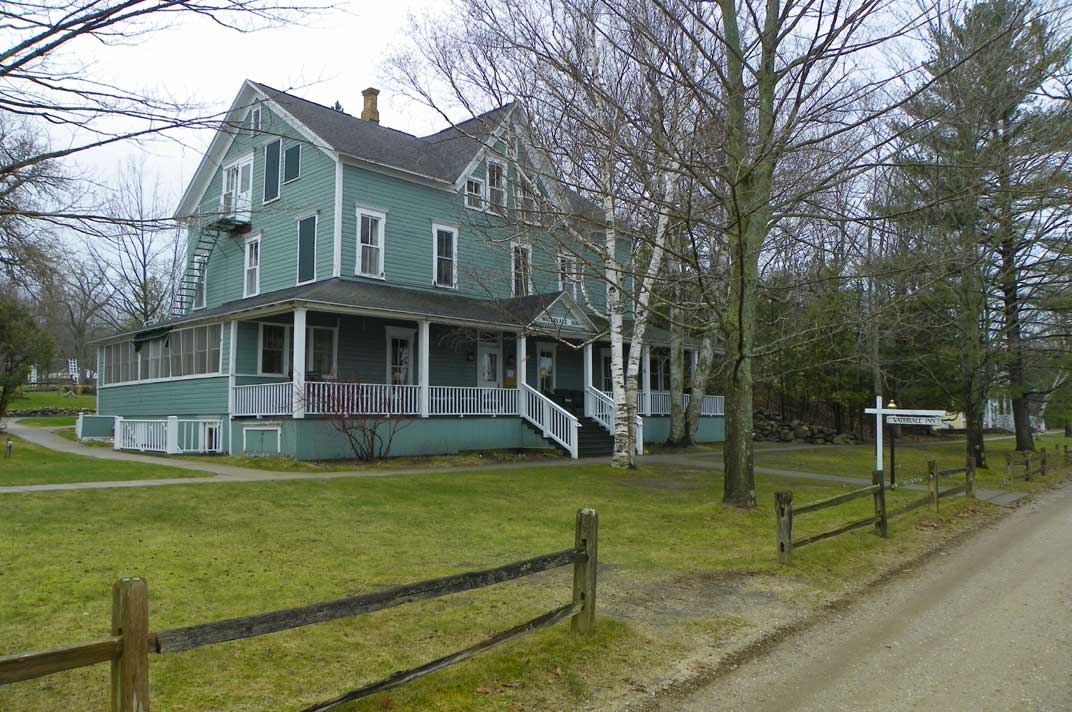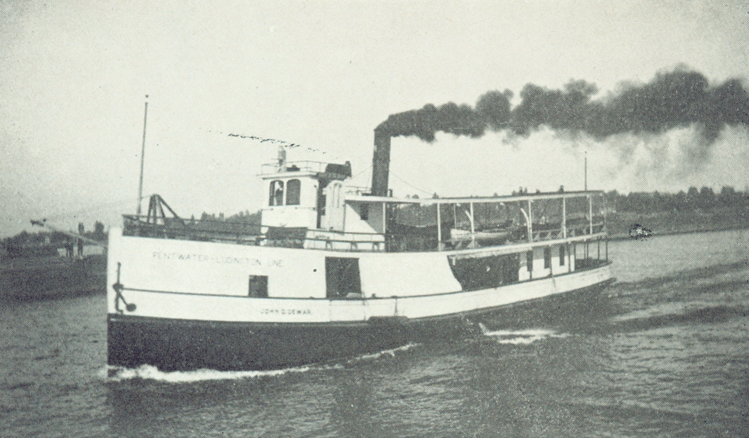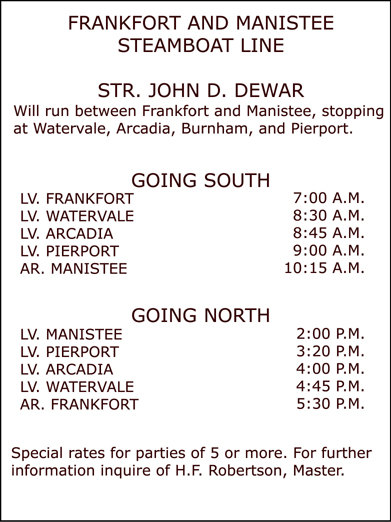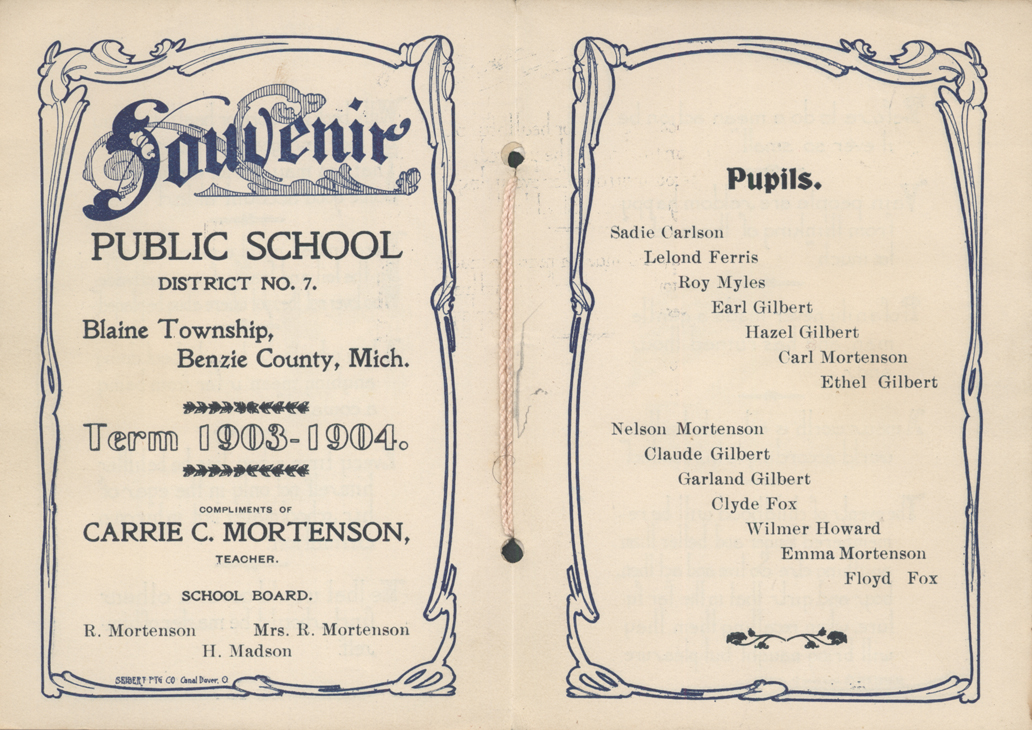Leo Hale's Watervale
by Ed Howard
The content of this article is derived much from diaries, memoirs, and memories.
Reprinted from Society News, the newsletter of the Arcadia Area Historical Society
November 2015. Volume 21 Issue 2.
|
In the heyday of Michigan lumbering, it was common for small towns, short lived as they often were, to spring up around the saw mills, and, so it was with Leo Hale’s “Watervale.” In early 1890, Mr. Hale began transferring his thriving saw mill business from Bear Lake to the south end of Lower Herring Lake where he’d have easy access to the “Big Lake.” He began immediately to construct a long shipping pier into Lake Michigan. During the next two years, he would also build twenty houses and a hotel for his workmen, a store, and even a school. Mr. Hale was thinking long term. He named and platted his little settlement “Watervale.” |
|
|
|
|
|
In April of that same year, John Howard arrived from Ohio and was settling in on his primitive farm a half mile south. From there he witnessed much of the beginning-to-end construction of Hale’s pier, including the hauling by “Big Wheels” of the long straight logs that would become the piers’ piles. Many were being cut and hauled from the surrounding farms. Oddly enough, John and his brother-in-law, Arthur Hunt, would be amongst those loading the first vessel ever loaded from that pier. That would occur Sunday, October 5, 1890, and would be only one of many loadings that John and his in-laws would perform that year at Hale’s Pier. Along with establishing his mill, buildings, and pier, Hale was also building a log-hauling railway from the mill eastward, through the swamp lands below and past Upper Herring into the hardwoods beyond. There stood the timber he was after. John Hunt, who’s farm was practically “over the hill” from where the rail left Watervale, was, through all the new “chopping” and heavy hammering constantly aware of its progress. He, like others along the route, was later amused, yet impressed, by the old time “saddleback” (water tank on top) engine Hale used to transport the logs to the mill. It was named Emily. |
|
|
|
|
|
|
|
|
|
|
|
Hunt, as were many farmers in Blaine Township, was looking forward to Hale’s new settlement. It could mean jobs with prompt pay, a close market for their wood and farm products, a nearby shipping port, faster travel to nearby towns, and, of great importance, a more exciting social life. And, for some and sometimes, those wants became real. Mr. Hunt knew well Blaine Township’s terrain and its people. He’d homesteaded there in 1863 and had experienced the real hardship of pioneer life. He’d lost two children in the process. He’d been Blaine’s first supervisor and had been constantly involved in community affairs since the beginning. Here in 1890, he was still taking the census; his home still served as the local post office, library and, for family and many friends, even the barber shop. Hale’s Watervale could, and would, assume some of his burden. |
|
|
Now, besides looking forward to the new settlement on the lake, John and wife, Theresa, were happy daughter Luty and husband John Howard had bought “Hop’s” (Ben Hopkins) place just south and Luty was “home” again. With son Arthur still at home and their other daughter Elta and husband Mike Gavigan already owning the farm next to Luty’s, the Hunts were now reunited. And, as hoped by all, Watervale did first succeed and thrive. By September, 1892 Hale had moved his family into the store, and it had become his home as well as office. The mill was running up to ten hours a day and producing 50-60,000 feet of wood products, including lumber, telephone poles, and fence posts. Farmers, accustomed to selling their logs and tan bark to Crane’s Mill in Frankfort or the mills in Bear Lake and Arcadia, were now striking “bargains” with Mr. Hale. Locals, like John Hunt himself, were impressed with Leo’s savvy-but-honest business practices. All-be-it, they may have been taken back by their first meetings with Leo; he was so completely bald he lacked even eyebrows. They generally found him wearing a skull cap around the store and office. Having Hale’s Mill so near made it especially inviting; the winter after the Pier was completed, the Hunts, Howards and Gavigans were cutting and drawing hundreds of logs to Lower Herring for easy floating to his mill in the spring. The pier became so important in the minds of locals that, sometimes, when they were really going to the mill, store, or hotel, they would simply say they were “going to the pier” or doing something “at the pier.” Here are some example excerpts from John Hunt’s diary in 1892 and 93: Sat. March 3 “…Arthur and Mike went to the pier to the dance.”; April 9 “…I went to pier… got some nails”; Dec. 31 (New Years’ Eve) “…I fiddled for dance at the pier.”; Jan. 27 “Coldest morning yet…I went to pier after mail.”; and March 1 “…went to pier with eggs.” |
|
|
|
|
|
The Pier’s importance, of course, increased greatly when it became a daily stop for the John D. Dewar, the passenger/freight ship that made daily trips between Frankfort and Manistee. No longer did folks like John and Theresa have to make that long carriage trek to Frankfort to sell their butter and eggs, and no longer did son Arthur have to make the even longer, over-night journeys to Manistee to pick up visitors or big-store items. Passage to all was at the Pier. |
|
|
|
|
|
|
|
|
School number 7, the Watervale School, thrived along with the town itself. It not only provided schooling for all the local youth, it was often the center for church, cultural, and social events--assemblies, speakers, special programs, and sometimes dances. The hotel was the main hub for big weekend and Holiday dances, but the school sometimes held them. Since the school was located on the very east end of the Watervale plat, right next to the Hunt farm, it was Arthur who routinely kept it supplied with heating wood for these events. |
|
|
But, as is so sadly recorded in local history, the economic “Panic of 1893-95” would usher in the end of Leo Hale’s little mecca. That depression is said to be second only to “The Great” one of 1929. Leo’s business went bankrupt, and his mill shut down in 1895.--The wheels of Emily the saddleback engine stopped churning. With the business went the jobs. The store did survive for a while; John Hunt still got his tobacco there on Dec. 14, 1899, and he sold butter and eggs there on Jan. 5th 1900. The School also continued operating into the new century. However, in a few years It was destined to again become a part of District 4, and the still-sturdy building was moved to the “Herring Lake flats.” The ship Dewar continued its stops after Hale’s departure. The Hunts took it to Manistee on May 20 of ’99, and Arthur had a meeting with her captain, Henry Robertson, the following Aug. 23. Also, a baseball team that formed under Leo’s watch continued playing. In June of 1897 the team “boys” were working intently and using a road grader to build a “ball grounds” in John Hunt’s field. On Sunday, June 13th, the Watervale boys played the Putney ball club a game “opposite the house.” The following Sunday they played “Grace” (Gilmore Township). Thereafter, the Watervale team played other local teams regularly on Sundays throughout that summer. It’s well recorded how others came after Hale’s bankruptcy and harvested the remains of his industry. We know even after the rails were gone his railroad bed was still used as a thoroughfare for transporting logs to the lake. And, wonderful it is that Dr. Oscar Kraft could arrive on the scene of Watervale in 1917 and, through great love and effort, turn the decaying ghost town into the beautiful resort it is today. But, thinking back, let’s not forget one Mr. Leo Hale. Back in 1890, he and his “Watervale” brought some much needed hope and happiness to a struggling community in Blaine Township. |
|
